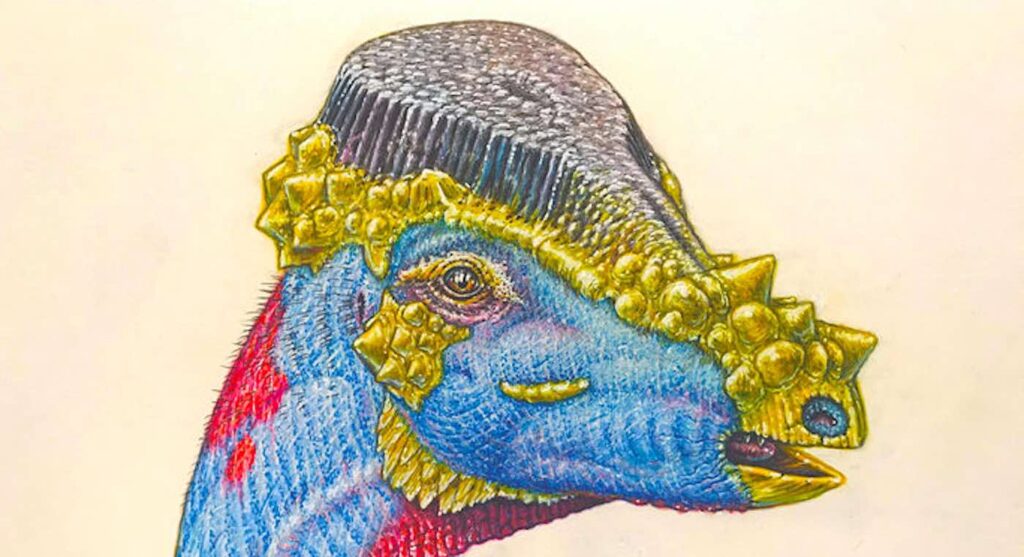Platytholus clemensi, a recently discovered pachycephalosaur paying tribute to the late William Clemens, surprises with a dome-shaped skull adorned with intricate keratin bristles. Unveiled through CT scans of the Montana find from 2011, the herbivorous dinosaur’s unique ‘brush cut’ challenges conventional depictions, suggesting a more elaborate design. Standing at 15 feet and roaming on two legs 68 million years ago, Platytholus clemensi offers a brief but fascinating window into the sophistication of prehistoric adornments.
In the ancient theater of discovery, Platytholus clemensi steals the spotlight as a dome-headed marvel from 68 million years ago. Unveiling its enigmatic features through a CT scan, this pachycephalosaur’s partially-completed skull reveals traces of keratin, akin to fingernails and rhino horn, manifesting as distinctive bristles—a prehistoric ‘brush cut.’
Hailing from Montana’s Hell Creek Formation, Platytholus clemensi, a towering herbivore at 15 feet, walked on two legs, leaving an indelible mark on the Mesozoic landscape.
Amid the diverse array of dinosaur skulls, adorned with horns and knobs, the unexpected keratin bristles add a unique chapter to the prehistoric narrative.
While traditional theories proposed head-butting rituals, this study challenges the notion, suggesting the bristles served as an elaborate headdress for display rather than combat.
he mysterious head wound, now healed, sparks debates ranging from dramatic head-butting clashes to chance encounters with fellow dinosaurs or environmental elements.
Published in the Journal of Vertebrate Paleontology, the study unravels the interpretation of these bristles, pointing towards a potential role in gender-distinguishing displays, challenging the conventional understanding of dinosaur behavior. Dr. John Horner invites us to view these ancient creatures through a bird-like lens, emphasizing the ornamental display observed in modern birds.
Blood vessels terminating abruptly at the dome’s surface hint at a keratin-covered structure, possibly oriented vertically. Dr. Horner speculates on the existence of an intricate, gender-specific display atop the pachycephalosaur’s head, potentially involving dynamic color changes linked to seasons.
Platytholus clemensi emerges not merely as a dome-headed dinosaur but as a canvas for elaborate displays, adding strokes of uniqueness to our perception of these ancient giants in the ever-evolving saga of paleontological revelations.
